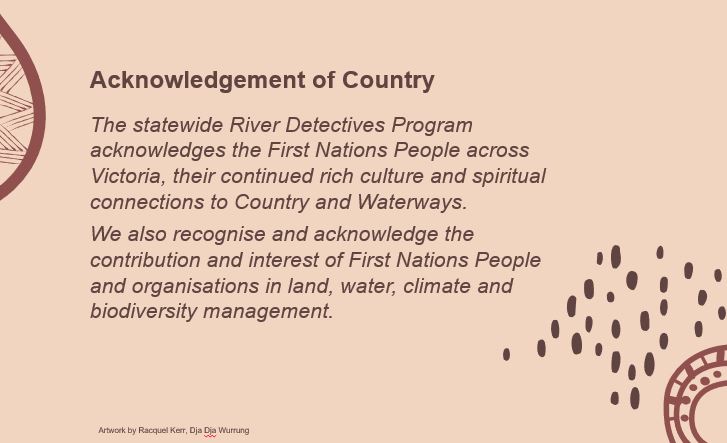Fauna (animals)
Explore the unique creatures that call our catchments and waterways home and how we can help them
Waterbirds and Farm Dams brochure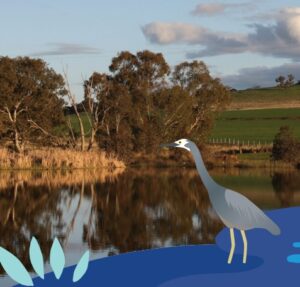
This guide can help landholders understand the habitat requirements of waterbirds to create or enhance a water body to attract native fauna. This has the added benefits of improving water quality and adding a valuable natural asset to the property.
|
Enhancing Farm Dams brochure
Farm dams can serve dual purposes as water supply for stock/households as well as important refuges for native fauna. Use this guide to learn how to enhance dams to conserve the ‘Magnificent Six’ – a group of threatened floodplain specialist fish on the brink of extinction in the southern Murray-Darling Basin. These species are southern pygmy perch, Yarra pygmy perch, southern purple-spotted gudgeon, Murray hardyhead, olive perchlet and flat-headed galaxias. Also see the resource, ‘Waterbirds and Farm Dams’ for creating habitat for waterbirds.
|
Gladys And Stripey picture story book
This story, written by Michele Gierck, is based on an Australian threatened fish species called Dwarf Galaxias (Galaxiella pusilla). Dwarf Galaxias are found in southern areas of Victoria but the book is valuable to all as a way of learning about waterways, native fish and the importance of healthy habitat and fish passage. Ideal for primary aged readers, the book can be purchased here. The book includes scientific notes, teachers notes and extension activities are available and we look forward to an online reading being released.
|
Native Fish Recovery Plan – working with landholders video
The Native Fish Recovery Plan aims to improve flows, connectivity and habitat to bring back our native fish in healthy numbers. Tim Sawers of Sawers Farms talks about the benefit to his properties of working with the Native Fish Recovery Plan and creating habitat for threatened and endangered small-bodied fish.
|
What is environmental DNA (eDNA) ? video
This short video explains how eDNA can help us detect native and invasive species by providing evidence about what is or isn’t present in the environment – it’s like nature’s genetic fingerprint ! eDNA testing is innovative technology that enables the detection of species without having to see, hear or catch them. eDNA offers an unprecedented opportunity for monitoring endangered and invasive species, as well as for biodiversity assessments.
|
Bendigo Creek restoration video
Clarence and Millie from Gardening Australia present a marvellous segment on Gardening Australia about the way Bendigo Creek is being reimagined, the way cultural knowledge is being embedded and the way we are looking to the future to bring back species and value this important urban waterway.
|
Wildlife of Native Grasslands on Victoria’s Northern Plains
Victoria’s Northern Plains grasslands support unique yet highly endangered and severely fragmented communities of plants and animals. Over the past 180 years, more than 99% of grasslands have been removed or substantially altered for agriculture. Learn about the creatures that rely on this important habitat and the plants and vegetation that support them. Head to fauna for videos about endangered Plains-wanderer birds.
|
Saving the endangered Plains-wanderer bird
Critically endangered and at risk of imminent extinction, the North Central CMA is working in partnership with Trust for Nature and Australia’s National Recovery Team for the Plains-wanderer. Find out more about Plains-wanderers by viewing these videos about these quirky creatures; of using song meters to monitor populations, Werribee Zoo’s captive breeding program, incubating Plains-wanderer eggs and this gorgeous footage of the first captive-bred chicks. A picture storybook has now been released with teacher notes and is a great way to engage young learners. You can also use this beautiful colouring sheet. To learn more about the unique habitat of the Plains-wanderer check out the brochures ‘Plants and Vegetation of Native Grasslands on Victoria’s Northern Plains’ and ‘Wildlife of Native Grasslands on Victoria’s Northern Plains’.
|
Underwater species colouring sheet
This colouring sheet features a variety of species that call our waterways home. Importantly it shows some of our endangered small-bodied fish. You can learn more about these fish in this video.
|
The Magnificent Six video
Six small-bodied native fish species, specialists of the wetlands across the southern Murray Darling Basin, are on the brink of extinction. Learn about why and the things that are being done to save them in this video. This colouring sheet also features the magnificent six species.
|
Nature Guides of Central Victoria
These user-friendly field guides have been produced by Macedon Ranges Shire Council for easy identification of central Victorian insects, birds, flora, weeds and grasses. Hard copies may be available from the Shire.
|
A to Z Creature Feature poster
From the Alpine Spiny Crayfish to the Zebrafish, Parks Victoria’s A-Z poster will help students learn about some of Victoria’s weird and wonderful plants and animals. For more information about the places where they are found head to the Parks Victoria website.
|
Reimagining Bendigo Creek Installation video
A short video montage from an art installation in the Bendigo Conservatory celebrating what Bendigo Creek habitat provides and what it could provide in future.
|
Native Fish Recovery Plan Prospectus – Gunbower and Lower Loddon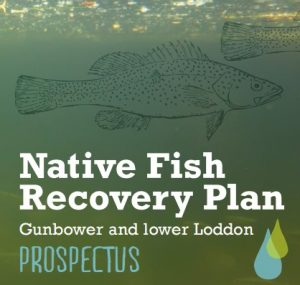
Although this document has been written for potential investors it is a great summary of the issues that exist in the Gunbower and Lower Loddon area and the strategies to overcome them. For a great example of agriculture working with environmental agencies to bring back endangered fish watch this video.
|
The Mysterious World of Eels video
This recording of an ARI seminar features Uncle Denis Rose and Dr Wayne Koster presenting on their partnership in eel migration research. It shares the importance of eels (both culturally and ecologically) and what we’ve learned through satellite tracking. The video runs for 1hr and is suitable for older viewers as a rare chance to dive deeper into the mysterious world of eels.
|
The impact of animal poo on our waterways
This article (and video) explains the impact animal poo has on our waterways and makes some interesting comparisons between the impact of native animal poo and exotic animal poo. The article is quite detailed but information can be extracted for younger students. The video is short and simple.
|
Nature-scrolling activity
A nature scroll is simply a long, narrow piece of paper used to record your responses to nature, in words and pictures. It can be a portable, bite-sized alternative to nature journalling and a wonderful way for your students to engage with their local environment or make observations whilst at your adopted water testing site. Make it scientific, make it artistic or both !
|
Platypus and Litter fact sheet
A simple fact sheet highlighting the horrific facts about litter and platypus and the good news of how we can help.
|
Why do mass fish deaths occur ? videos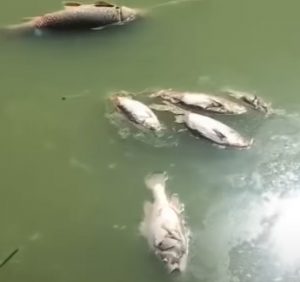
Between December 2018 and January 2019, three mass fish death events happened along a 40km stretch of the Lower Darling River, downstream of Menindee Lakes. Although this event occurred far from us in Victoria it was a highly public and very distressing event for everyone, seeing up to a million fish including 100-year-old Murray cod die in one of the biggest environmental catastrophes to hit the river. The video linked to the title above and this one here help students understand the issues around what happened. Note: views expressed are the opinion of the video producers not River Detectives or any participating CMA. And a warning that some scenes could be distressing for students.
|
Linking the Landscape – The Cobaw Biolink video
This video by Newham Landcare promotes the important role of the Cobaw Biolink in enhancing the connections between Mount Macedon and the Cobaw Range on both private and public land. Protecting existing high quality vegetation and creating connectivity in the biolink will help native plants and animals adapt to climate change. The video aims to engage the community and make them aware that their contribution, no matter how big or small, can have a positive impact on the environment on a landscape scale, making catchments and waterways healthier and everything that relies on them.
|
Bird Quizzes
Your students will love exploring these three bird quizzes on Birdlife Australia’s Aussie Bird Count website;
|
Digital story; If We Care We Can: A Story of How One Glider Helped Save a Forest
‘If We Care We Can’ is a digital children’s story which is freely available online. It is reasonably long, 60 pages, but turn on the audio and it’s perfect to watch/listen to as a serial over several days. It is set in the forests of northern NSW but has many relevant messages for Victorian students. This story is best viewed on a tablet or computer in landscape view.
|
Annual Environmental/Cultural Celebration Dates
Schools and the community are invited to recognise and celebrate significant environmental / cultural days each year; some are regional, some national and some international. Many of these days tie in perfectly with the ethos of the River Detectives program and provide valuable opportunities to broaden/deepen environmental learning and encourage your students to advocate on a range of environmental and cultural issues. Check out this calendar (embedded with loads of links) and go wild !!
|
Easter Basket
While Easter is not an Aboriginal celebration, eggs were a big part of customary life and looking at how Aboriginal people used eggs is a great perspective for all age groups at Easter time. The protocols around egg gathering took into consideration the sustainability of the species producing them. Eggs were respected as a source of life as well as nourishment for mob. Eggs would be collected in vessels weaved by Aboriginal women from the naturally available reeds and materials of the local area. This Easter printable features the artwork of Darug Artist, Chloe Webb.
|
What’s In Your Habitat ? activity sheet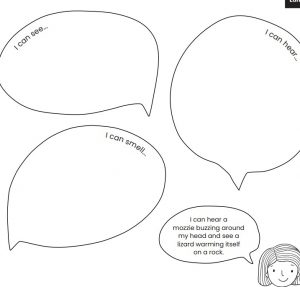
Use this simple template to challenge students to sit quietly outside and record what they see, hear and smell using words/sketches.
|
Nature Journalling activity
Be inspired by this video by central Victorian Trace Balla and start recording the things you see, hear, touch and smell at your local waterway or anywhere in nature. You can also access her Nature Journalling for Little Ones video or Nature Journalling for Teens video. Journal throughout a year and record the seasonal changes you observe. This ideas sheet from Paperbark Writer will help get you started too !
|
Brolga Bangarra Dance Theatre video
The brolga is a majestic bird of Victoria’s wetlands and has long been held as an important totem in traditional life. Watch a video of brolga’s visiting Tang Tang Swamp or a video about the birth of a brolga in central Victoria then enjoy watching the way the Bangarra Dance Theatre represents brolgas through dance.
|
Budj Bim eel trap system video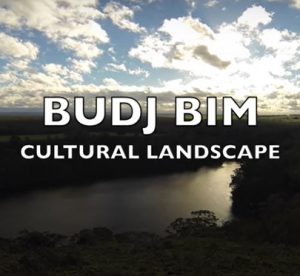
Budj Bim is a dormant volcano in South Western Victoria on Gunditjmara Country. Budj Bim means High Head in the language of Gunditjmara people and is home to one of oldest aquaculture systems in the world. Budj Bim is said to have erupted over 30,000 years ago and the lava flow that resulted created a system of channels that Gunditjmara people developed into weirs, dams and traps for fish and eels. Older students may wish to find out more about the UNESCO World Heritage-listed Budj Bim National Park by watching this 30 minute virtual tour presented by the Glenelg Hopkins CMA for the 2020 Victorian Nature Festival.
|
Virtual Electrofishing Tour video
Join Arthur Rylah Institute scientists for an electrified virtual field experience. Fishing with electricity (electrofishing) helps us learn more about fish, their habitat and how we can protect them. Arthur Rylah Institute work right around Victoria to surveys rivers, streams and creeks for all kinds of fish. This is one video in a series of incredible 360°perspective, virtual reality (VR) films. The films create virtual, first-hand experiences bringing science and the work of scientists to life. Although these films are best experienced using a VR headset, they are available online (viewing quality will vary depending on your internet connectivity). When viewing on your computer, use your mouse to hover over the video and look around or click on the arrows that are in the upper left-hand corner. Arrows will help guide you to key features of the video we don’t want you to miss, but remember, your time in the field is your own, and you can always revisit and explore other parts of the video. Visit here for other videos in the series.
|
Virtual Turtle Trapping in the Barmah-Millewa Forest video
Join DELWP scientists for an immersive field experience trapping for turtles in the Barmah-Millewa Forest on the Murray River. They’re monitoring the health of turtles to better understand how we can reverse the population decline of turtles in the area. This is one video in a series of incredible 360°perspective, virtual reality (VR) films. The films create virtual, first-hand experiences bringing science and the work of scientists to life. Although these films are best experienced using a VR headset, they are available online (viewing quality will vary depending on your internet connectivity). When viewing on your computer, use your mouse to hover over the video and look around or click on the arrows that are in the upper left-hand corner. Arrows will help guide you to key features of the video we don’t want you to miss, but remember, your time in the field is your own, and you can always revisit and explore other parts of the video. Visit here for other videos in the series.
|
The artistry and ingenuity of bird nests video
Whilst visiting your waterway each month for water quality testing you might notice the building and use of bird nests as a key seasonal change. Bird nests are endlessly fascinating and we can learn much about the skill, patience, resilience, artistry and ingenuity of birds by learning about the way they build and use nests. Although this is an American video it is a great resource to showcase the many different types of nests that birds build around the world. There are also some great picture story books about bird nests; Bird Builds A Nest by Martin Jenkins, Birds Build Nests by Yvonne Winer and Mama Built A Little Nest by Jennifer Ward. Watch this video of nest building up close or challenge students to gather materials and try building their own nest – it’s harder than they might think !
|
Seasonal Calendars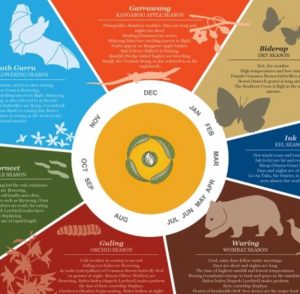
Aboriginal people traditionally lived by seasonal calendars not dictated by the conventions of summer, autumn, winter and spring but by the changes they observed in nature throughout a year. This is one example of a Kulin Nation seasonal calendar. You might be able to source one that is more specific to the traditional owners of your area ? Click here for an outline of the Wotjobaluk seasonal calendar for the Wimmera-Mallee area or view another version at the Visit Grampians website. Click here to watch a video about Dja Dja Wurrung seasons. Keep observations of your waterway and local catchment throughout a year with your students and make your own text or pictorial calendar inspired by a traditional seasonal version or this riparian/agricultural example from the North Central CMA. . . . .or combine the two !
|
The Wing Thing bird booklets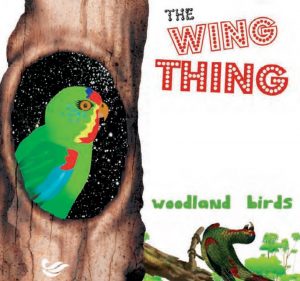
Print off one of four Wing Thing bird booklets packed with facts and activities for upper primary students; Shorebirds Woodland Birds Beach Nesting Birds Threatened Mallee Birds
|
Bird-inspired fashion
If you were a bird, which one would you be ? Why ? Choose your favourite bird or the bird that represents you best due to it’s personality, appearance or behaviour. Study its colours and find items with matching colours in your wardrobe to represent its colourful plumage and be a ‘bird’ for a day. A great idea for National Bird Week in October or for good fun anytime.
|
Bird Call Bingo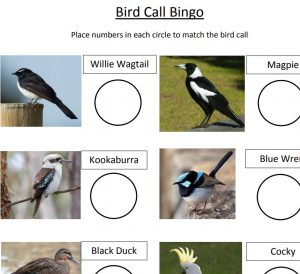
Use this bingo sheet and play respective calls from the Victorian Fauna Field Guide App in random order to see who can match calls to the pictures best. Make your own bingo sheet of favourite birds in your local area.
|
Backyard Bird Bingo
A very simple activity sheet to involve young students in an assessing their school, waterway, home, etc for not only birds but the qualities of good bird habitat; plants and prey.
|
Nest Boxes for Wildlife
Use this website for all you need to know about nest boxes; nest box designs, installation tips and monitoring methods. Making and monitoring nest boxes is a great project for students and a fantastic way to enhance habitat at your waterway, school, home, local park, etc.
|
Platypus in Peril video
This video from our friends in the Upper Murray area explores the challenges platypus populations are facing and outlines the practical things that can be done to help. Features Geoff Williams from the Australian Platypus Conservancy.
|
Backyard Birds of Victoria
This great resource can be used as a identification chart for students to begin their birdwatching adventures and the second page is an excellent fact sheet with tips on bringing back birdlife to our parks, homes and gardens.
|
Melbourne Water Platypus Program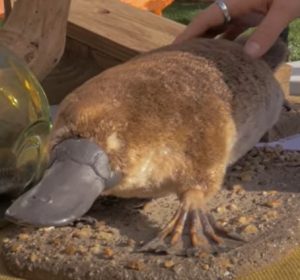
This short video provides some great information about the physical features of the unique platypus, their diet, habitat, threats, what is being done to help them and what we can all do to contribute.
|
Bird colouring sheets
Birds can be thought of as ‘nature’s flying rainbows’. Colour these fact sheets or use them to inspire your own drawings and make a bird mobile or bird bunting to decorate your classroom, bedroom or garden: galah, pelican, rainbow bee-eater, red-capped parrot, star finch, variegated fairy-wren.
|
Edithvale-Seaford Wetland video series
These six educational videos focus on the Edithvale-Seaford Wetlands in the Melbourne Water area, exploring their fauna and flora, rich history, role in providing drainage, and the community groups who play a key role in caring for them. Get a well-rounded understanding of the wetland’s many diverse roles, by watching the full video series: Animals of the wetland Birds of the wetland Drainage story of the wetland Friends of the wetlands History of the wetland Plants of the wetland
|
Animals of the Wetland video
Learn how wetlands support a variety of wildlife — including birds, reptiles, frogs, fish and bugs — which are all part of a complex food web. Filmed at the Edithvale-Seaford Wetlands in the Melbourne Water area the content is true for most wetlands. This is one of six educational wetlands videos featuring the Edithvale-Seaford Wetlands.
|
Surveying for platypus using eDNA video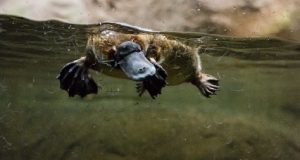
Environmental DNA (eDNA) is a non-invasive sampling technique that detects genetic material from a target species secreted into the surrounding environment (e.g. water). During 2020 the Upper Campaspe Landcare Network conducted the Platypus Project aimed to address the lack of contemporary knowledge about platypus and blackfish populations by investigating the current distribution of platypus and blackfish throughout the upper Campaspe area of the North Central CMA region using eDNA. Senior ecologist and platypus expert Dr Josh Griffiths from EnviroDNA led the project and provided the technical knowledge and advice to Citizen Scientists participating in this Project. Here he tells us all about it in a fascinating 14 minute video perfect for older students.
|
Why waterbirds don’t get soggy video
A great video from the Deep Look youtube channel looking at the waterproof qualities of feathers. Ducks and geese spend a lot of time preening their feathers. This obsessive grooming – and a little styling wax from a hidden spot on their back side – maintains the microscopic feather structure that keeps them warm and dry in chilly waters.
|
Backyard Buddies website
If you are looking to find out more about the native fauna and flora at your waterway, home, school, etc this website is a great place to start. ‘Explore‘ your own piece of wilderness by reading profiles about native birds, bugs/insects, mammals, frogs, reptiles and some plant families. Get busy with a project and ‘Create‘ buddy habitats for birds, bugs/insects, mammals, frogs, reptiles and plants. Use the tips to ‘Help‘ a backyard buddy.
|
The Best Beak in Boonaroo Bay picture story book
This picture story book by Narelle Oliver is perfect for understanding how animals, in this case birds, have evolved over time to possess bodies that are just right for finding and eating their favourite foods. The birds in this watery environment all compete for the title of the ‘best beak’ but discover that they all have the best beak for their own needs. Use this book as a springboard to studying the adaptions of animals to survive – the ‘feathery friends’ activity is a small way to start with younger students.
|
Frogs of the Wimmera slideshow
This very informative powerpoint presentation was put together by the Wimmera CMA as a PD for River Detectives educators in that region during 2020. It is full of information, graphics and useful links for teachers to brush up their own skills and arm themselves with content and resources to teach students about frogs.
|
Fern Hames the Fish Lady video
Fern Hames, Murray Darling Basin Authority Native Fish Strategy Co-Ordinator for Victoria, explains that because of the change of river flows, human water usage and the introduction of non-native fish species, there has been a 90% reduction of native fish numbers since the 1860 Burke and Wills expedition passed this area. A short engaging video with some great facts about native fish; Silver Perch and Murray Cod; and introduced fish; Carp and Weather Loaches.
|
Garden Habitats for Small Aussie Birds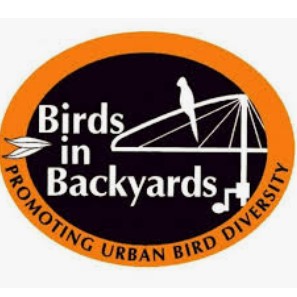
This video highlights suitable plants for three groups of small Australian birds; small honeyeaters, small insect-eaters and small seed-eaters. Boosting bird habitat at home, at school, at your River Detectives test site or in your local community is a great project to help our native feathered friends. You may even be able to attract grant funding !
|
Aussie Backyard Bird Scavenger Hunt activity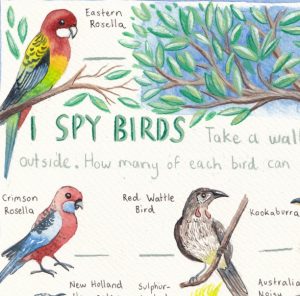
Use this ID sheet to enjoy the fun of birdwatching on your own, with others, anywhere, anytime. This simple sheet can be an introduction to more birding fun using the BirdData app to complete seasonal bird surveys or by participating in the Aussie Backyard Bird Count in October each year.
|
Aussie Backyard Bird Count App
BirdLife Australia has created the Aussie Backyard Bird Count app for participation in Australia’s nationwide bird survey. For one week each year near the end of October, as part of National Bird Week, thousands of people get to know their local birds and help Birdlife Australia discover how our birds are getting on. It only takes 20 minutes in your backyard, neighbourhood park, or favourite green patch to be a part of this exciting event. You can use the Field Guide year round to learn more about your feathered friends.
|
Aussie Backyard Bird Count
The Aussie Backyard Bird Count is an annual citizen-science event held in National Bird Week (October). It is a great way to connect with the birds in your backyard no matter where your backyard happens to be — a suburban backyard, a local park, a patch of forest, down by the beach, or the main street of town. You can use the App to do as many 20-minute surveys as you like over the week with the data collected assisting BirdLife Australia understand more about the birds that live where people live. Use the lesson plans to explore birdwatching at school. Check out an infographic of the 2020 results for some great maths stats.
|
Discover Ducks
Did you know that Australia is home to 15 native duck species? Yet five in six Victorians can’t name a single one! The ‘Discover Ducks’ website wants to change this and build a nation of duck lovers who are passionate and knowledgeable about our native ducks. Head to this website to; learn about iconic Victorian duck species, learn how to care for ducks, use the duck detector guide to go duck spotting, use the duck detector map to find out where ducks have been spotted or add your own sighting, challenge yourself to the ‘know your ducks quiz’ or complete a fun survey to discover which duck you are.
|
How beetles breathe under water video
A great video from the Deep Look youtube channel analysing the adaptions beetles have developed to survive and thrive in their aquatic environments. Students will love this peek into the amazing world of water beetles. Check out Deep Look on youtube for other fascinating videos about the lives of terrestrial bugs.
|
Water Striders up close video
A great video from the Deep Look youtube channel analysing the various ways that water striders have evolved to become expert hunters of their aquatic prey. Students will love this peek into the amazing world of water striders. Check out Deep Look on youtube for other fascinating videos about the lives of terrestrial bugs.
|
Water Spider v Water Strider video
A great video from the Monster Bug Wars youtube channel showcasing the unique adaptions of water striders and how they would match up in a battle against a water spider.
|
On The River picture story book
This book is a delight for all ages from the creator of the bestselling At the Beach series. Follow the mighty Murray River from its smallest beginnings in the mountains to where it meets the sea on an epic journey with Roland Harvey and his pelican friend, in this glorious picture book full of humorous, intricate illustrations and fascinating information. Together they discover the story of the river: its secrets, history, ecology, people and animals. And you’re invited, too! There are no online versions of this book but a hard copy can be ordered at your favourite book store. Teacher’s notes are available along with a worksheet for younger readers.
|
Wilam: A Birrarung Story
Wilam: A Birrarung Story is written by Aunty Joy Murphy and Andrew Kelly and illustrated by Lisa Kennedy. It tells the Indigenous and geographical story of Melbourne’s Yarra River, from its source to its mouth, from its pre-history to the present day and includes words from the Woiwurrung language. There are no online versions of this book but a hard copy can be ordered at your favourite book store. Comprehensive cross-curricular teacher’s notes are a wonderful guide to implementing this beautiful book in the classroom.
|
Wetland Illustration
This illustration can be printed at A3 size to outline the important values of wetlands and highlight the factors that threaten their health.
|
“Rivertime” picture story book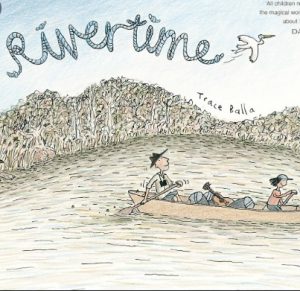
Rivertime by Trace Balla follows the adventures of Clancy who goes on a paddling adventure down the Glenelg River in the Wimmera CMA region with his bird-watching uncle. It is a story about slowing down (‘rivertime’), growing up and connecting with the land and its creatures. It’s also a fantastic launching pad for doing some birdwatching at your waterwatch site. There are no online versions of this book but a hard copy can be ordered at your favourite book store. The story can be read as a class but is best enjoyed by individuals to read and reflect at their own pace, pore over the detailed illustrations and enjoy every comic-style speech bubble. Teacher Notes provide suggested activities for middle/upper primary students or use this Rivertime-inspired pocket birdwatching guide by Trace Balla to inspire your students to make a guide for your area !
|
Environmental Water in Northern Victoria
Many of Victoria’s rivers and wetlands have been modified to provide water vital for farms, homes and industry. Water for the environment also benefits communities by improving conditions for fishing, camping and canoeing. Improved water quality can have economic benefits for irrigation and urban water supply. This map shows how water for the environment will help improve and protect plants and animals in northern Victoria in 2020-21.
|
Importance of the Ground Storey
This resource developed by Goulburn-Broken CMA highlights the importance of ground storey to native fauna and catchments. Ground storey is the layer of leaf litter and woody debris found on the ground and is often misunderstood as a mess or fire risk that must be cleaned up. This guide with stunning nature photography can be used as a series of fact sheets for teacher background or student research.
|
Richardson River’s Journey posters
These two posters are an excellent resource for staff and students to familiarise themselves with the Richardson River – it’s; source, path, reaches, catchment, major towns, history, most notable features, flora, fauna and users. The engaging format, stunning photos and user-friendly text makes it the perfect tool for teacher background, student-lead research and learning about an important waterway in the north central region.
|
Re-snagging posters
These two posters are invaluable to explain the importance of in-stream woody habitat to native fish and explains some of the important work that is taking place in the lower Loddon River and the Little Murray River as part of the north central CMA’s native fish recovery plan. Features include great photos, fact files, information and an excellent diagram outlining the threats and values in a waterway that impact on fish health.
|
Coliban River’s Journey poster
This poster is an excellent resource for staff and students to familiarise themselves with the Coliban River – it’s; source, path, catchment, major towns, history, most notable features, flora, fauna and users. The engaging format, stunning photos and user-friendly text makes it the perfect tool for teacher background, student-lead research and learning about an important waterway in the north central region.
|
Water Birds of the Loddon River poster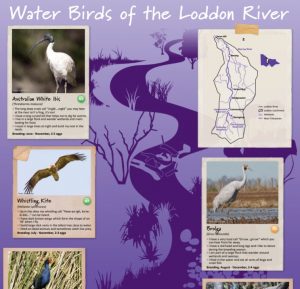
This is a wonderful poster showcasing six of the most important native water bird species of the Loddon River. It features a map of the Loddon River and its catchment and fact files on six water bird species outlining; appearance, size, life cycle, habitat, diet, breeding, behaviour, calls and conservation status. Use the Natureblitz App to listen to calls and record sightings.
|
Frogs of the Loddon River poster
This is a wonderful poster showcasing six of the most important native frog species of the Loddon River. It features a map of the Loddon River and its catchment and fact files on six frog species outlining; appearance, size, life cycle, habitat, diet, breeding, behaviour, calls and conservation status. Use the Natureblitz App to listen to frog calls and record sightings.
|
Fish of the Loddon River poster
This is a wonderful poster showcasing six of the most important native fish species of the Loddon River. It features a map of the Loddon River and its catchment and fact files on six fish species outlining; appearance, size, life cycle, habitat, diet, breeding, behaviour and conservation status. Use the Natureblitz App to record sightings.
|
Avoca River’s Journey posters
These three posters are an excellent resource for staff and students to familiarise themselves with the Avoca River – it’s; source, path, reaches, catchment, major towns, history, most notable features, flora, fauna and users. The engaging format, stunning photos and user-friendly text makes it the perfect tool for teacher background, student-lead research and learning about an important waterway in the north central region.
|
Loddon River’s Journey posters
These three posters are an excellent resource for staff and students to familiarise themselves with the Loddon River – it’s; source, path, reaches, catchment, major towns, history, most notable features, flora, fauna and users. The engaging format, stunning photos and user-friendly text makes it the perfect tool for teacher background, student-lead research and learning about an important waterway in the north central region.
|
Campaspe River’s Journey posters
These two posters are an excellent resource for staff and students to familiarise themselves with the Campaspe River – it’s; source, path, reaches, catchment, major towns, most notable features, flora, fauna and users. The engaging format, stunning photos and user-friendly text makes it the perfect tool for teacher background, student-lead research and learning about an important waterway in the north central region.
|
Waterbirds Field Guide of the North Central region
This guide produced by North Central Waterwatch includes fact files on waterbird species; description, distribution, diet, calls, breeding, habitat and conservation status. Beautiful photos make it a great asset for birdwatching at any waterway.
|
Fish Need Trees poster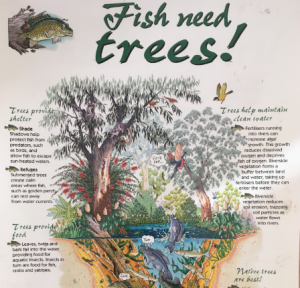
This beautiful graphic illustrates the variety of ways that fish use trees in and beside waterways and why it’s essential we retain and replace them.
|
Fish Need Healthy Rivers poster
This is a great poster highlighting the features of waterways that fish require for food, shelter, breeding and migration, from source to mouth.
|
Golden Perch Profile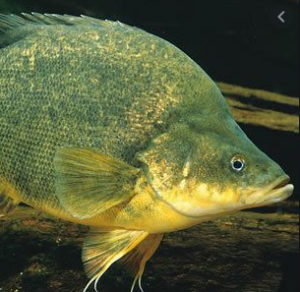
Find out about Golden Perch and their distribution across northern Victorian waterways.
|
Murray Cod Profile
Find out about Murray Cod and their distribution across northern Victorian waterways.
|
Finding Hope – Wimmera Platypus Surveys
The Wimmera CMA take you behind the scenes of their MacKenzie River platypus surveys in the Grampians. This footage was filmed during their 2019 autumn surveys. In the spring of that year they returned and filmed more beautiful footage of a male platypus.
|
World Wetlands Day – A Wimmera Wetland video
To celebrate World Wetlands Day 2020 the Wimmera CMA zoomed in on Dock Lake near Horsham that received water for the first time in two decades in 2016. They recorded the great diversity and abundance of waterbirds that flocked to the lake, showing how adding water to wetlands can trigger a huge response from nature.
|
The Wimmera – A Flowing Fish Tale video
This video produced by Wimmera CMA is a great example for all regions of how a healthy river that strikes the balance between the needs of plants, animals and people can build a vibrant community. It shows that strategies ensuring healthy fish populations boosts the enjoyment of the river by local and visiting anglers and sends the message that if you look after the river, it will look after you.
|
Barwon River Planting Day video
Over 40 local recreational anglers braved wet and windy conditions in July 2019 to help revegetate the Barwon River. Thousands of native trees, shrubs and grasses were planted on the banks of the lower Barwon River near Marshall, south of Geelong, to return a one kilometre stretch of the river to its original woodland habitat. This is a great example of working together to improve fish habitat.
|
iNaturalist Citizen Science App Instructions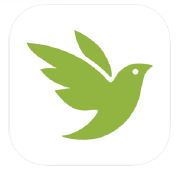
Instructions on how to download and use the iNaturalist app, developed by Corangamite CMA.
|
PlatypusSpot Citizen Science App Instructions
Instructions on how to download and use the PlatypusSpot app, developed by Corangamite CMA.
|
FrogID Citizen Science App Instructions
Instructions on how to download and use the FrogID app, developed by Corangamite CMA.
|
‘Birds in Backyards’ seasonal bird survey program
Get involved in seasonal bird surveys with Birdata, Birdlife Australia’s easy-to-use website and app. Both resources automatically give you a list of 30 birds from your region to help get you started – so you don’t need to be an expert to take part. Use this video to learn how to get started using the Birdata website to enter your results or, if you are a maths maniac, browse, filter, graph, analyse and compare bird data from anywhere in Australia. The App is a portable conservation tool allowing volunteers to leap into the colourful world of birdwatching and enter bird survey data via phones or tablets. You can also get involved in the Aussie Backyard Bird Count in October each year, a nationwide citizen-science event.
|
Wild Pollinator website
The Wild Pollinator Count gives you an opportunity to contribute to wild pollinator insect conservation in Australia. Twice a year (April and November) the community is invited to count wild pollinators in the local environment and help build a database on wild pollinator activity. You can join in by watching any flowering plant for just ten minutes sometime in the count weeks.
|
Victorian Fauna Field Guide App
Explore Victoria’s unique and diverse wildlife at home or in the great outdoors with Museums Victoria’s free Field Guide app. Available for both Apple and Android devices, the app holds descriptions of over 950 species, including birds, mammals, fishes, reptiles, frogs and invertebrates from terrestrial, freshwater and marine environments. Bird and frog calls, where held, can also be played for enjoyment and identification.
|
Frogs Field Guide of the North Central region
This guide produced by North Central Waterwatch includes fact files on frog species; description, calls, breeding, eggs, tadpoles, habitat and conservation status. It also clearly explains the different types of pupils, toes and eggs that can assist with frog identification. The frog profiles are also available as fact sheets; Growling Grass Frog, Peron’s Tree Frog, Southern Brown Tree Frog, Whistling Tree Frog, Barking Marsh Frog, Bibron’s Toadlet, Common Froglet, Common Spadefoot Toad, Giant Banjo Frog, Plains Froglet, Pobblebonk, Southern Toadlet, Spotted Marsh Frog, Striped Marsh Frog and Victorian Smooth Froglet.
|
Fish Field Guide of the North Central region
This guide produced by North Central Waterwatch includes fact files on fish species; description, breeding, fins, eggs, habitat, diet and conservation status including threats. A map showing the fish species approximate distribution in the North Central CMA region and a breeding cycle calendar is also provided for each species, along with a photo or two. The fish profiles are also available as fact sheets; Short-headed Lampray, Bony Bream, Common Galaxias, Mountain Galaxias, Flat-headed Galaxias, Spotted Galaxias, Australian Smelt, Freshwater Catfish, Murray Hardyhead, Un-specked Hardyhead, Murray-Darling Rainbowfish, Golden Perch, Macquarie Perch, Trout Cod, Murray Cod, Silver Perch, River Blackfish, Southern Purple-spotted Gudgeon, Flathead Gudgeon, Dwarf Flathead Gudgeon, and Southern Pygmy Perch .
|
Growling Grass Frog story
This resource from NSW Department of Planning, Industry and Environment is a colouring book and treasure hunt focused on the Southern Bell Frog (we call it the Growling Grass Frog in Victoria). It is a beautifully detailed keepsake for students looking at the habitat, life cycle, diet, call, appearance of the Growling Grass Frog and its place in the ecosystem of wetland life.
|
Puzzling Platypus activity sheet
Read some facts about the diet of a platypus then complete the maze from Melbourne Water to help the platypus return to her nest and babies in the creek bank. Perhaps students could calculate 25% of their own body weight and work out what foods they could eat to satisfy that quantity each day ?
|
The Frog Lifecycle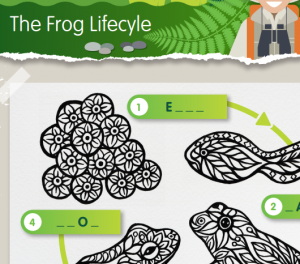
A simple worksheet from Melbourne Water to review the stages of a frog’s lifecycle. Great to use as a reading comprehension activity.
|
Birth of the Brolga
Rare footage of a pair of brolga incubating and rearing two chicks highlights the need for a plan to deliver environmental water to wetlands.
|
Frogs at McDonalds Swamp and Wirra-Lo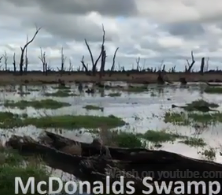
Delight at the sound of the frog chorus in two of north central Victoria’s wetlands.
|
Cohuna Fish Screens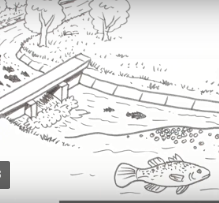
This engaging animation clearly explains the problems that irrigation channels can cause for native fish and how fish screens are proving to be an effective solution.
|
Gunbower Forest bird breeding event video
This short video shows how environmental watering programs can make a difference to the health and reproduction of water birds.
|
How Wolves Change Rivers video
When wolves were reintroduced to Yellowstone National Park in the United States after being absent nearly 70 years, the most remarkable changes occurred. Although this is an American example, this video is a powerful example of how everything in nature is inextricably linked and one change can cause a ripple effect, in this case called a ‘trophic cascade’.
|
Mosquito Madness
The unit provides 5 lesson plans to allow students to understand the life cycle of mosquitoes, specifically their morphogenesis and the way the organism changes appearance throughout its lifetime. Other key topics include mosquito habitats, ecology and environmental impacts on the mosquito population.
|
Wetlands Habitat Activity Booklet
The resource contains six engaging activities for primary students to develop awareness around wetlands, wetland habitats and the importance of wetlands in our world.
|
Platypus colouring sheetUse Melbourne Water’s beautiful image of the platypus as a mindful colouring activity.
|
Carp Fact Sheet
Find out about this introduced fish species and how carp impact on our waterways
|
Our platypus – information brochure (posters)
This brochure developed by Melbourne Water is useful for any region with great information presented in a very clear format that could be used as posters for the classroom.
|
Creating a frog friendly habitat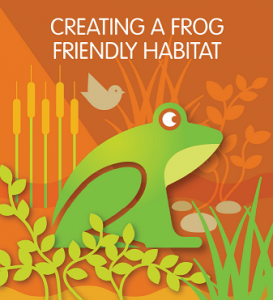
Find out all about how to create a frog friendly habitat
|
Controlling carp fact sheet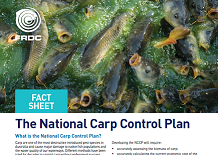
Find out all about the National Carp Control Plan – informative and interesting!
|
Growling Grass Frog colouring sheet
Alternatively you could use Melbourne Water’s Growling Grass Frog activity sheet where the colouring is set amid some facts about the specie.
|
Frog Life Cycle colouring sheet
|
Frogs colouring sheet
|
Nine days on Tang Tang Swamp
A beautiful and breathtaking secret insight into life on a drying waterhole at a public wetland located in north central Victoria
|

